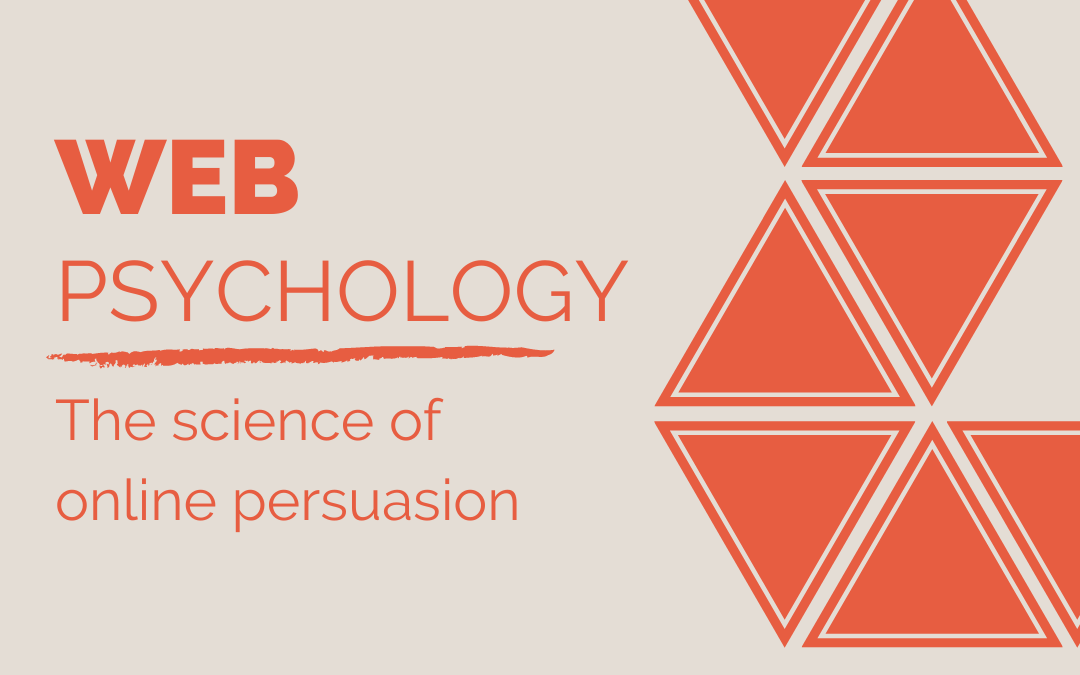Curated by Nathalie Nahai, international speaker, and best-selling author of Webs of Influence: The Psychology of Online Persuasion. She coined the term ‘web psychology’ , defining it as ‘the empirical study of how our online environments influence our attitudes and behaviors and helps businesses apply scientific rigor to their design and decision-making processes to achieve better engagement online. She writes for Marketing Week and is a regular guest on BBC radio.
What are the hidden psychological influences that persuade people to engage with you, trust you, and buy from you? In this lesson, you’ll find some resources that will arm you with a grounding in web psychology so that you can better understand what motivates your users and how to design persuasive websites that will get them to take the actions you want.
In this keynote for the Royal Institution, I explain how you can use specific scientific principles from the worlds of psychology, design, and behavioural economics to design more persuasive, effective websites and marketing.
Which principles will you apply to your website or marketing to target the primal, emotional, and rational motivation systems of your customers? And how will you test their efficacy?
Video marketing is still hard, despite the prevalence of easy-to-use online video tools. When the majority of your potential customers are skipping ads on YouTube, how can you purposefully design a video that will make this hostile audience want to watch more? In this high-octane presentation, video strategist Phil Nottingham and I show you the 3 crucial steps you need to take to design persuasive videos that will engage your audiences and increase your reach.
Which case studies are most relevant to your business? What psychological keywords best match the personality profiles of your audience? And which practical, technical steps will you take to ensure people watch your videos?
BJ Fogg is a leading voice in the field of persuasive technology. In this paper, he presents a new model for understanding human behaviour, which explains how it is a product of three factors: motivation, ability, and triggers.
How can you apply the elements in this paper to better motivate, enable, and trigger your customers to reach a mutually beneficial goal?
In this free, exclusive sneak peek into Increase Your Web of Influence, you’ll learn some of the secret strategies that make your prospects and clients click. You’ll get a full lesson on how the different systems in the brain influence our online behaviour, including homework for you to complete.
Complete the homework in this course to help you apply the principles you’ve learned.
Other Product Psychology Lessons
- Building Community Starts with Understanding People
- When Persuasion Becomes Deception
- Mastering Pricing Principles
- A Handy Behavioral Design Toolkit
- Onboarding Matters – Getting Users Engaged in your Product
- Dual Process Theory: Is Your Product the Elephant or the Rider?
- Web Psychology – The Science of Online Persuasion
- Developing User Empathy with Design Sprints
- Want To Be A Game Psychologist? What You Need to Know
- How to Do Effective User Research
- Context Driven Design (The “Context Effect”)
- Writing Copy for Your Reader’s Brain
- Designing Habit-Forming Products
- Games, Play, and Motivation
- How Scarcity & Impatience Drive Irrational User Behavior
- Should You Listen To Your Users or Your Data?
- Emotional Engagement – Designing with the Heart in Mind
- Product Psychology: The 3 Things Everyone Should Know About

